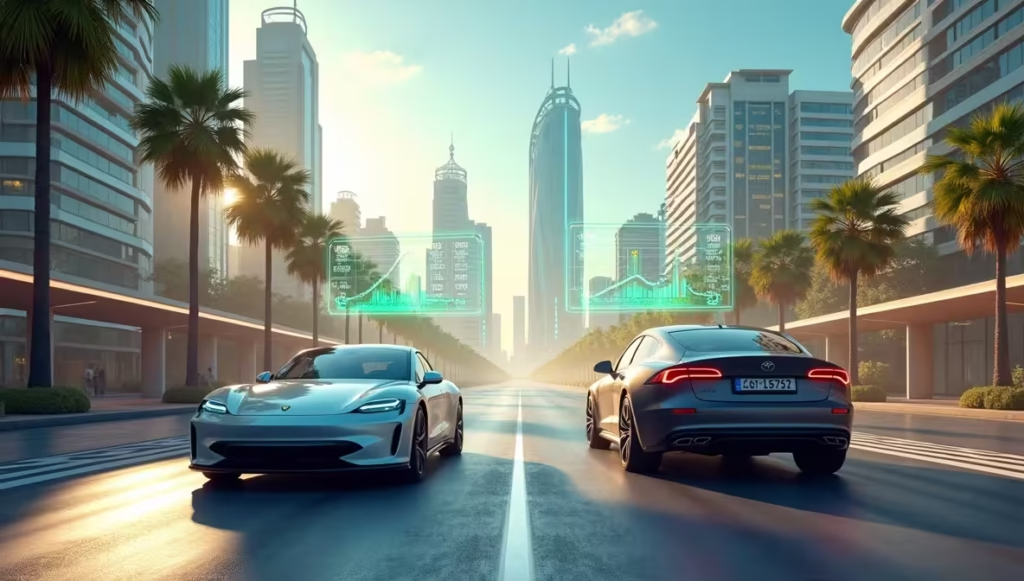EVs Are Now 73% Cleaner Than Gas Cars — Here’s the Proof 🌱

The debate is over: electric vehicles (EVs) are significantly cleaner than gasoline-powered cars—even when you account for battery production.
A new study from the International Council on Clean Transportation (ICCT) finds that EVs sold in Europe in 2025 produce 73% fewer lifecycle greenhouse gas emissions than traditional gas vehicles. That’s a major improvement from just a few years ago, and the gap keeps growing.
Let’s break down what this means for EV drivers, eco-conscious consumers, and the planet.
What Does “Lifecycle Emissions” Really Mean?
When we talk about a vehicle’s emissions, we’re not just talking about what comes out of the tailpipe. In fact, EVs have zero tailpipe emissions—but they still have an environmental footprint from:
- Battery manufacturing
- Electricity production
- Vehicle assembly and transport
The ICCT study compared well-to-wheel emissions for EVs, plug-in hybrids (PHEVs), hybrids, and internal combustion engine (ICE) cars. Even after factoring in emissions from mining lithium and producing EV batteries, EVs came out far ahead.
Key Findings From the ICCT Report
🚗 Battery electric vehicles (BEVs) sold in Europe in 2025 are:
- 73% cleaner than gas cars
- 50% cleaner than plug-in hybrids
- 42% cleaner than traditional hybrids
📉 In 2021, EVs were only 59% cleaner than ICE vehicles. That means we’ve gained 14 percentage points in just 4 years, thanks to cleaner electricity grids, better battery production practices, and circular economy efforts.
The Power of Cleaner Grids
One major driver of this emissions drop? The shift to renewable energy.
As Europe adds more wind, solar, and hydro power, the electricity used to charge EVs is getting greener. According to the ICCT, countries with 70–100% renewable grids saw up to 90% lower EV lifecycle emissions compared to ICE cars.
⚡️ Want to maximize your EV’s climate benefit? Charging from home solar is one of the best ways to go green.
Learn how in 5 Easy Tips to Slash EV Energy Use at Home.
What About Battery Manufacturing?
Critics often point to the environmental cost of battery production, especially mining lithium, cobalt, and nickel. But battery manufacturing has become more efficient and sustainable over time.
Here’s how:
- Recycled materials are being used more frequently, reducing mining needs.
- Gigafactories powered by renewable energy (like Tesla’s Berlin plant) cut manufacturing emissions dramatically.
- Lifecycle emissions from battery packs now make up less than 30% of a BEV’s total emissions, and that percentage continues to drop.
Hybrids and PHEVs Are Falling Behind
One surprising takeaway from the ICCT study? Hybrids haven’t improved much.
Why?
- They still burn fossil fuels for most trips.
- Plug-in hybrids are often not charged regularly, meaning they operate like standard gas cars.
In contrast, full EVs are improving rapidly, creating a widening gap between true zero-emission vehicles and transitional tech.
A Global Perspective: What About the U.S. and Asia?
While this study focused on Europe, the same trends are happening worldwide:
- China is rapidly cleaning up its grid and leads the world in EV adoption.
- The U.S. is catching up fast with the Inflation Reduction Act fueling clean energy and EV investments.
- In developing countries, clean electricity + EV adoption could leapfrog polluting infrastructure entirely.
Why This Matters for Sustainable Living
Switching to an EV is one of the most effective personal choices you can make to reduce your carbon footprint. Combine that with:
- Home solar panels
- Smart charging habits
- Eco-friendly driving behaviors
…and you’re well on your way to a carbon-light lifestyle.
Want more tips? Check out our post on 10 Easy Eco-Friendly Habits That Make a Big Difference.
Final Thoughts: It’s Not Just Cleaner — It’s Smarter
This new ICCT data confirms what many of us have long believed: EVs aren’t just a trendy tech—they’re a climate solution.
And the numbers speak for themselves. A 73% drop in emissions isn’t just impressive—it’s essential.
If you’ve been on the fence about going electric, let this be your sign. The future isn’t just electric—it’s smarter, cleaner, and already here.
Want more climate-friendly driving insights and EV news? Stay tuned to GreenEVLife.com — where sustainability meets smart mobility.

